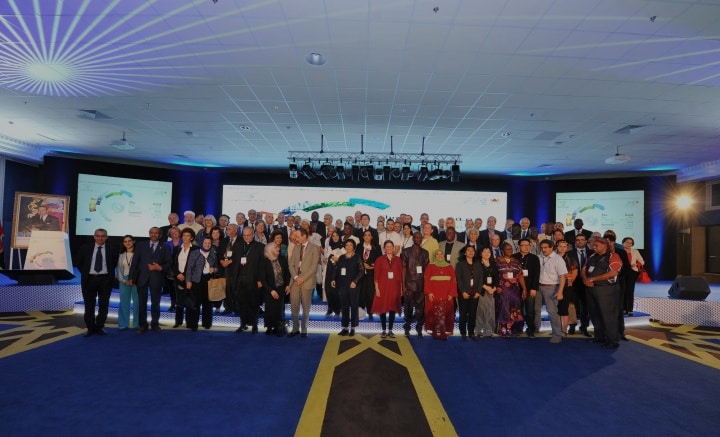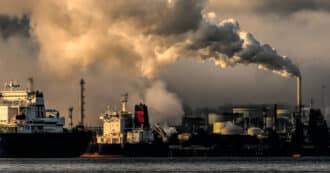What is the United Nations Framework Convention on Climate Change?
By Harry Cooper – During the end of the 20th century, it became clear that climate change was becoming a more and more pressing issue. As a result, in Rio De Janeiro in June 1992, 153 countries signed the United Nations Framework Convention on Climate Change, or UNFCCC, committing to work together to combat climate change.
Main Strategies of the UNFCCC
The ultimate objective of the UNFCCC is to lower greenhouse gas, or GHG, emissions to “a level that would prevent dangerous anthropogenic interference with the climate system”. In order to do this, the UNFCCC details a strategy involving cooperation and development to create a more sustainable global climate system.
Global Development as Part of The Framework
One of the main tenets of the original UNFCCC document is that it emphasizes the importance of development in it’s strategy to combat global warming. It specifically puts an emphasis on the importance of the difference between developed and developing countries, and how developed countries should take the majority of the responsibility in fighting climate change.
The UNFCCC also talks about the specific responsibilities the developed world has in combating climate change. Not only does it discuss how the developing world needs to work towards reducing its own GHG emissions, but also about how it needs to promote sustainable development in developing countries through sharing technology.
By promoting sustainable development in developing countries, developed countries are able to reduce the negative effects of climate change in the developing world. Not only that, but it enables developing countries to be less reliant on unsustainable practices as they develop, so that they will emit less greenhouse gases later down the line.
Communication Through The Convention on Climate Change
The UNFCCC also emphasizes the importance of communication in solving climate change. The UNFCCC details this by requiring its parties to meet every year to discuss their progress and future climate action.
Notable UNFCCC Conventions
The Kyoto Convention
The Kyoto Protocol was established in 1997. The main focus of the Kyoto Protocol was reducing GHG emissions in developed countries. The goal set for these countries included reducing the level of GHG emissions to 5% from what they were at in 1990 in the five year commitment period from 2008-2012.
The Effects of the Kyoto Protocol
From the moment it was signed it was already evident that the Kyoto Protocol would not be very successful in combating climate change. The two biggest contributors to GHG emissions were China and the US, and neither of them were required to complete the goals set in the protocol.
This was because China was considered to be a developing nation, and The US never ratified the Kyoto Protocol in the first place. This effectively exempt them from having to participate in the treaty.
Along with China and the US not being subject to the Kyoto Protocol, the countries that did commit to reducing emissions had mixed results. Of the 150 countries who signed the protocol, only 38 were developed countries, 36 of which did meet the protocol’s goals.
However, globally, emissions rose overall in the 2008-2012 period. So, while on paper Kyoto looked successful as far as it’s actual positive impact on climate, it’s considered a failure.
The Paris Convention
After the failure of the Kyoto Protocol, there was a need for another global effort at combatting climate change. The next attempt by the UNFCCC was The Paris Agreement, signed in 2016.
The Paris Agreement was signed by 125 countries. The initial goal was to lower the average global temperature to below 2°C above the pre-industrial era levels. After achieving this, they hoped to lower it to below 1.5°C above the pre-industrial levels.
The Paris Agreement also involved a large amount of communication. The main facet of this communication is requiring the countries involved to report their progress at reducing their carbon emissions at a global stocktaking meeting in 2023, and every five years after.
The Effects of the Paris Agreement
Because the countries that signed the Paris Agreement haven’t met yet, we don’t have an official report of how successful they have been. However, with 2020 tying with 2016 as the hottest year on record, it doesn’t seem like the Paris Agreement will be meeting its goals anytime soon.
The Future: UNFCCC and the Planet
COP-26, the most recent UN conference on climate, was held in Glasgow in November of 2021. At the conference, the countries agreed on other emission reduction goals in edition to the ones found in the Paris Agreement.
COP-26 Convention on Climate Change
These agreements include reducing coal emissions by 40% as well as a pledge to phase out fossil fuel subsidies. While no firm dates were set for these goals, the pact also included the goals of ending deforestation and cutting 30% of methane emissions by 2030. But with most of these policies not being enforced by anyone other than the countries themselves, it seems unlikely that they will succeed.
While none of the decisions or treaties made by the UNFCCC have been successful historically, there are still some success stories. For instance, in 2020, the European Union officially started using more energy from clean renewable sources than from fossil fuels, effectively meeting the goals they set for themselves and the ones set by the UNFCCC.
Even outside of the political arena, new environmental technologies are being invented all the time that help combat climate change. There are also numerous grassroots movements pushing companies and governments to do something about climate change.
So, while the UNFCCC may not be the greatest success as the official form for climate action, there is still a lot being done elsewhere. The global stock-take for the Paris Agreement coming up in 2023, may also cause a shift in the role of the UNFCCC in the fight against climate change.
Faith Based Organizations at the UNFCCC
At the most recent COP in Glasgow, religious leaders from many different faith mobilized their communities to advocate for climate action. They did this through hosting vigils, sermons, marches and protests, as well as coming together between faiths to discuss climate action.
Faith organizations have started playing a more and more important role in moving people towards climate action. Some even claim that their ability to move communities towards action is more helpful than the unenforceable plans drawn up by the actual UNFCCC.
The Interfaith Center for Sustainable Development, or ICSD, is one such accredited organization with observer status, and has attended multiple COPs in recent years. The founder of the organization, Rabbi Yonatan Neril, wrote in Eco-Bible Volume 1 about global climate action and the failure of the UNFCCC.
“Our actions are the true indication of our commitments. In 1992, the world’s governments committed to curbing climate change and reducing emissions of greenhouse gases, yet every year since, humanity’s emissions have risen. Emissions of CO2 in 2020 have doubled since 1990. Clearly, we are not sufficiently committed to the announced goal. Since 1992, billions of people have continued to source their food unsustainably from across the planet, collectively taken millions of plane flights and driven billions of miles, and eaten a tremendous amount of food cultivated through unsustainable and even dangerous processes. These trends show no sign of reversing. What can shift our direction, to care and work more diligently toward what is most important—a thriving, spiritually aware, and sustainable humanity—and to live in ways that can actually achieve this?”
As a society it may seem like no one is ready to give up their unsustainable practices, and commit to actually reaching the goals set by the UNFCCC. However in Eco-Bible Volume 2, Rabbi Neril talks about youth in grassroots movements and their role in the fight against climate change.
“Young climate leaders engage with leaders at events like the United Nations Youth Climate Summit as well as the annual UN Climate Change Conference (COP). Khishigjargal, age 24, from Mongolia said, “We are the last generation that can end climate change. We can and we will.”691 Young people seem to sense and act on the urgency of climate change more than older generations and are therefore a key channel for humanity changing quickly to a sustainable path.”





